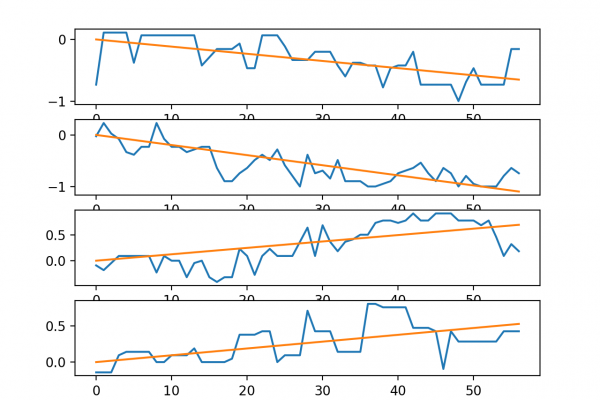Indoor Movement Time Series Classification with Machine Learning Algorithms

Last Updated on August 28, 2020
Indoor movement prediction involves using wireless sensor strength data to predict the location and motion of subjects within a building.
It is a challenging problem as there is no direct analytical model to translate the variable length traces of signal strength data from multiple sensors into user behavior.
The ‘indoor user movement‘ dataset is a standard and freely available time series classification problem.
In this tutorial, you will discover the indoor movement prediction time series classification problem and how to engineer features and evaluate machine learning algorithms for the problem.
After completing this tutorial, you will know:
- The time series classification problem of predicting the movement between rooms based on sensor strength.
- How to investigate the data in order to better understand the problem and how to engineer features from the raw data for predictive modeling.
- How to spot check a suite of classification algorithms and tune one algorithm to further lift performance on the problem.
Kick-start your project with my new book Deep Learning for Time Series Forecasting, including step-by-step tutorials and the Python source code files for all examples.
Let’s get started.
- Update Sept/2018: Added a link to a
To finish reading, please visit source site